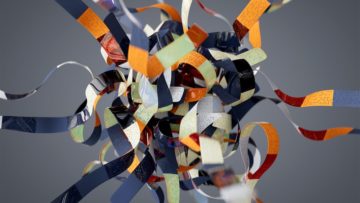Erik Guzik in Singularity Hub:
 Of all the forms of human intellect that one might expect artificial intelligence to emulate, few people would likely place creativity at the top of their list. Creativity is wonderfully mysterious—and frustratingly fleeting. It defines us as human beings—and seemingly defies the cold logic that lies behind the silicon curtain of machines. Yet, the use of AI for creative endeavors is now growing.
Of all the forms of human intellect that one might expect artificial intelligence to emulate, few people would likely place creativity at the top of their list. Creativity is wonderfully mysterious—and frustratingly fleeting. It defines us as human beings—and seemingly defies the cold logic that lies behind the silicon curtain of machines. Yet, the use of AI for creative endeavors is now growing.
New AI tools like DALL-E and Midjourney are increasingly part of creative production, and some have started to win awards for their creative output. The growing impact is both social and economic—as just one example, the potential of AI to generate new, creative content is a defining flashpoint behind the Hollywood writers strike. And if our recent study into the striking originality of AI is any indication, the emergence of AI-based creativity—along with examples of both its promise and peril—is likely just beginning.
When people are at their most creative, they’re responding to a need, goal, or problem by generating something new—a product or solution that didn’t previously exist. In this sense, creativity is an act of combining existing resources—ideas, materials, knowledge—in a novel way that’s useful or gratifying. Quite often, the result of creative thinking is also surprising, leading to something the creator did not—and perhaps could not—foresee. It might involve an invention, an unexpected punchline to a joke, or a groundbreaking theory in physics. It might be a unique arrangement of notes, tempo, sounds, and lyrics that results in a new song. So, as a researcher of creative thinking, I immediately noticed something interesting about the content generated by the latest versions of AI, including GPT-4.
More here.
